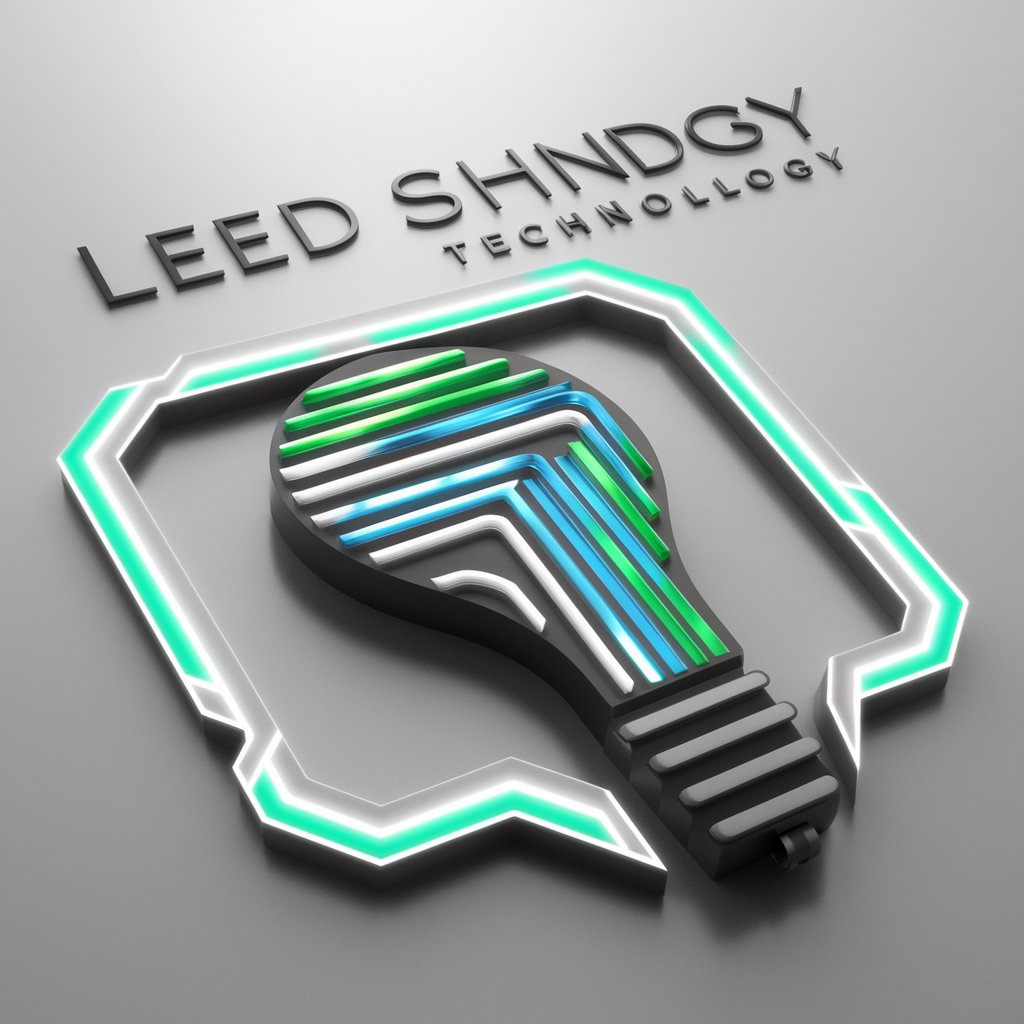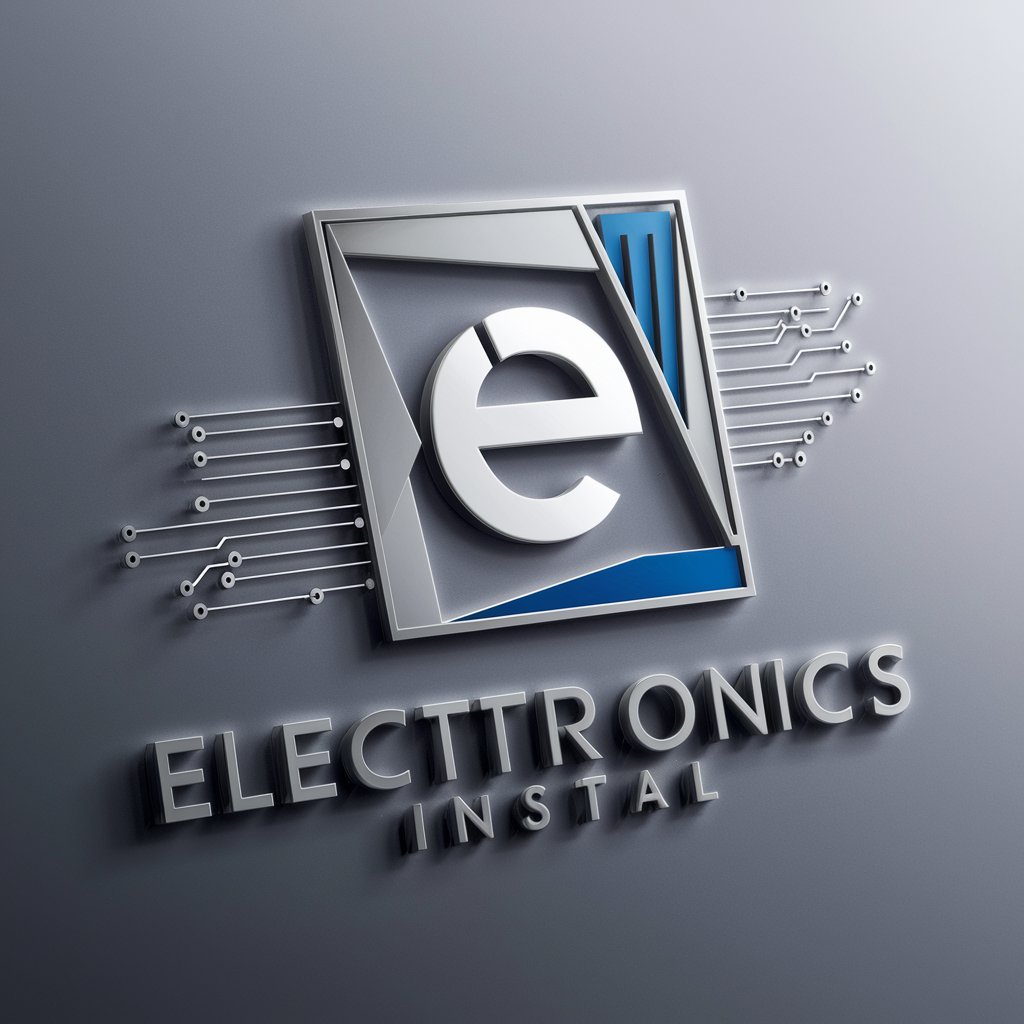LED Lights - LED Lights Insight

Welcome! Let's explore the bright world of LED technology together.
Illuminate smarter with AI-driven LED solutions
Explain the working principles of LED technology and its advantages over traditional lighting solutions.
Discuss the latest innovations in LED lighting for home and commercial use.
How do LEDs contribute to energy efficiency and environmental sustainability?
Describe the different applications of LEDs in various industries, such as automotive, healthcare, and entertainment.
Get Embed Code
Introduction to LED Lights
Light Emitting Diodes (LEDs) are semiconductor devices that convert electrical energy into light. Unlike traditional incandescent bulbs, which produce light by heating a filament until it glows, LEDs generate light through electroluminescence—a process where electrons recombine with electron holes within the device, releasing energy in the form of photons. This process is highly efficient, resulting in less heat production and a longer lifespan for the LED. LEDs are designed to emit a wide range of colors, including the visible, ultraviolet, and infrared spectra, by varying the material and composition of the semiconductor. This versatility allows for a broad array of applications, from basic indicator lights on electronic devices to sophisticated lighting solutions in homes, offices, and public spaces. An example scenario illustrating the use of LEDs is in modern street lighting, where they provide bright, reliable illumination while significantly reducing energy consumption and maintenance costs compared to traditional lighting technologies. Powered by ChatGPT-4o。

Main Functions of LED Lights
Energy Efficiency
Example
Replacing incandescent bulbs with LEDs in home lighting.
Scenario
In residential settings, LEDs consume up to 90% less power than incandescent bulbs, leading to substantial energy savings and reduced utility bills for homeowners.
Long Lifespan
Example
Use in traffic signals and public signage.
Scenario
LEDs can last up to 100,000 hours, significantly reducing replacement and maintenance costs for municipal infrastructure.
Durability
Example
Integration into outdoor gear like headlamps.
Scenario
LEDs are resistant to shock, vibrations, and external impacts, making them ideal for outdoor and adventure gear where reliability is critical.
Color Rendering
Example
Art gallery lighting.
Scenario
LEDs offer excellent color rendering, enhancing the visual appearance of artworks without causing damage from UV light, ensuring that colors are seen as intended and preserved over time.
Flexibility in Design
Example
Architectural and landscape lighting.
Scenario
Due to their small size, LEDs can be used in virtually any design configuration, allowing for innovative lighting designs that can be seamlessly integrated into architectural and landscape projects.
Ideal Users of LED Lights
Environmental Conscious Consumers
Individuals looking to reduce their carbon footprint and energy consumption will benefit from the energy efficiency and long lifespan of LED lighting, making it a sustainable choice for their homes and businesses.
Municipalities and Public Works Departments
Cities and towns seeking to lower energy costs and maintenance demands for street lighting, traffic signals, and public spaces will find LEDs to be a cost-effective and durable solution.
Interior Designers and Architects
Professionals in design and architecture value LEDs for their versatility, color options, and the ability to create innovative, energy-efficient lighting designs that enhance the aesthetics of spaces.
Industrial and Commercial Enterprises
Businesses operating in sectors where lighting plays a crucial role in productivity and safety, such as manufacturing, warehousing, and retail, can achieve better illumination, reduced operational costs, and enhanced working environments with LEDs.

Using LED Lights Guide
1
Start your journey at yeschat.ai for a hassle-free, no-signup required trial to explore the capabilities of LED Lights.
2
Identify the specific application or project you have in mind, whether it's for home lighting, automotive, industrial use, or creative projects.
3
Select the appropriate LED light type and color temperature based on your application's needs—ranging from warm white for cozy interiors to cool white for task lighting.
4
Install the LED lights according to manufacturer instructions, ensuring proper wiring and heat management to maximize lifespan and performance.
5
Adjust the lighting as needed to achieve the desired ambiance or functionality. Consider using dimmers or smart LED systems for greater control and energy efficiency.
Try other advanced and practical GPTs
Enterprise Software
Empowering businesses with AI-driven solutions

Electronics Setup
Simplifying your tech setup journey with AI

Advanced Automation And Electronics Lab Expert
Empowering Innovation with AI Expertise

Electronics Store
Your AI-powered electronics retail guide

Electronics Install
AI-Powered Electronic Installation Expertise

English Skillset Test & Growth Plan
AI-Powered Language Mastery

Performance
Illuminate Your Stage with AI

StackAdapt Marketing Master
Empower Your Marketing with AI

Copy Goddess
Crafting Words, Engaging Minds

Media Search Engine
AI-powered Media Exploration

Media Insight Analyst
Empowering Media Insights with AI

Event Planner
AI-powered event planning made easy

LED Lights Q&A
What are the advantages of using LED lights over traditional lighting solutions?
LED lights offer higher energy efficiency, longer lifespan, lower heat emission, and better environmental sustainability compared to traditional incandescent and fluorescent lights.
Can LED lights be used for outdoor applications?
Yes, LED lights are well-suited for outdoor applications due to their durability, weather resistance, and ability to operate in a wide range of temperatures.
How do I choose the right color temperature for my LED lights?
The choice of color temperature depends on the desired ambiance and functionality: warm white (2700K-3000K) creates a cozy atmosphere, while cool white (3500K-5000K) is ideal for task lighting.
Are LED lights dimmable?
Many LED lights are dimmable, but it's important to use them with compatible dimmer switches to avoid flickering and to ensure smooth dimming performance.
How can I integrate LED lights into smart home systems?
LED lights can be integrated into smart home systems using smart bulbs or controllers that connect to home automation platforms, allowing for remote control, scheduling, and customization.
